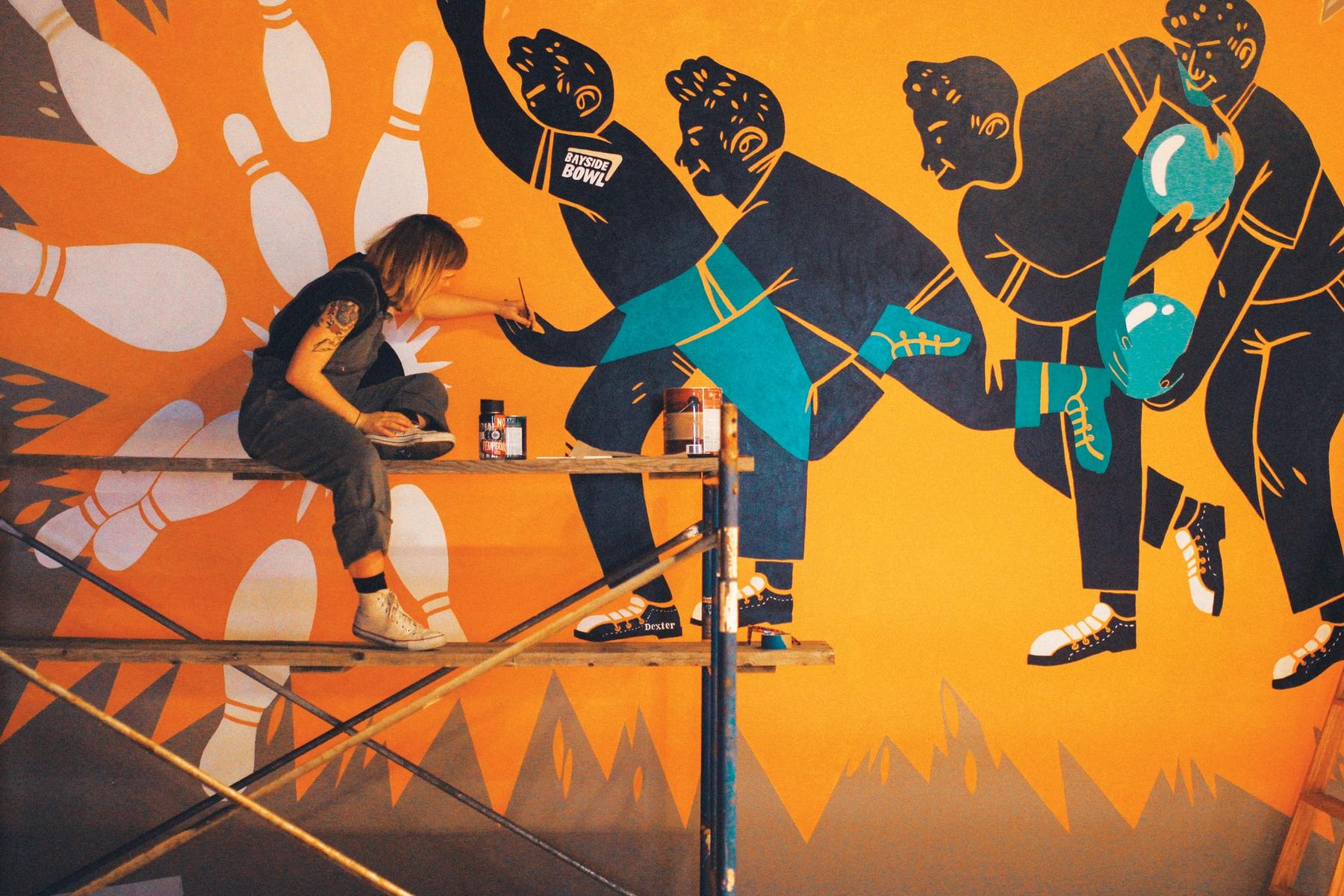Career Guide

Welcome To Our Career Guide

Your education and training at Maine College of Art & Design have prepared you for a multitude of professional opportunities. Whether you want to be a studio artist, a designer, or an arts administrator, you’ve mastered skills that translate into a variety of career choices: critical thinking, creative problem solving, risk-taking, collaboration, and innovation.
Current students and recent graduates — use this guide to help kickstart your career. Each section outlines practical steps, tips, and tools that can complement your education as you explore professional opportunities.
Professional Toolkit
There are key tools that you’ll need over and over again throughout your career. This section outlines basic elements of a professional toolkit that are essential to building your career regardless if you’re applying for your first grant, attending a monthly networking meetup, setting up an online profile, or beginning a job search.
It’s useful to have a standard template for many of these documents, such as your bio or resume, that you can tailor for specific opportunities. You’ll also want to revisit most of these tools every few months — to refine language, update contact information, or add work samples — as your career evolves. All of your documents and tools should reflect your professional goals, share vocabulary, and have a consistent look and feel.
Resumes
Your resume outlines your skills, accomplishments, and professional history. It can be tailored to a specific audience and should be updated on a regular basis. An employment resume is sent to a potential employer. An artist resume outlines your exhibition history and is required for most applications for artist grants, industry competitions, or residencies. Resumes are often read within a few seconds and need to be written with an impeccable attention to detail.
Cover Letter
A cover letter is usually required if you’re responding to a specific job opening, but you can also write a cover letter to request a studio visit, internship, or portfolio review.
A cover letter is usually sent with a resume and a link to your portfolio as part of a job or internship application. It may be sent as an email — or as a PDF attached to an email — or as a formally typed one-page letter in the mail. It’s a persuasive letter that identifies who you are, your interest in the company, organization, or individual you’re contacting, and your potential value as an employee.
Portfolio
Having strong documentation of your work is essential to your career. Your work samples can communicate a lot about your approach to your practice.
Online Presence: Website and Social Media
Online publishing gives you a multitude of ways to share your practice. Once you have strong digital documentation of your work, you’re ready to create a portfolio website and post work to social media.
Posting your work online can extend its life and grow your audience. You can choose to share work at all stages from ideas to process, production, end use, or exhibition. Find ways to link your work online and offline:
- Reveal a larger story behind your work through text, imagery, and photos.
- Post older work on your website that might otherwise get lost.
- Reshare work through social media that may have had a short lifespan, such as a limited edition print or publication, or one-time collaboration or workshop.
- Show work that might have a limited audience, such as a performance or exhibition.
Business Cards
Once you’ve established a strong online presence and as you begin to search for opportunities it’s useful to create a set of business cards to help promote your work.
You can bring business cards to conferences, meetings, networking events, and openings. It’s always a good idea to keep a few cards on hand — you never know who you may meet. These cards are often saved, act as a physical reminder of your practice, and provide a direct link to your contact information.
Alumni Stories
Our community of graduates is a diverse network of artists and designers creating and exhibiting their art throughout the world.
"I work as a full-time visual artist managing two studios, applying for fellowships and residencies, writing grants, creating project budgets and time management proposals for museum exhibitions. I have created good relationships within the arts and continue to nurture new networks in order for my career to continue to grow and prosper. ...The language I use regarding my work is hugely important. My research skills and time management are what keep me on track with my studio goals and deadlines. I learned these things while at Maine College of Art & Design."
"Everything I have learned in my graphic design degree has translated professionally to my employment, my freelance work, and my own personal projects."
What our Alumni Do with Art Degrees
- Artist-in-Residence, Design Studio for Social Intervention
- Art Teacher, North Yarmouth Academy
- Chief Operating Officer, United Way
- Creative Director, Peabody Essex Museum
- Curator, Issue Project Room
- Design Editor, L.L. Bean
- Digital Creative Director, Anthropologie
- Director of Massive Change, Bruce Mau Design
- Effects Animator, Walt Disney
- Executive Director, Indochina Arts Partnership
- Founder, Pickwick Independent Press
- Game Designer, Self-Employed
- Graphic Designer, Cole Haan
- International Projects Manager, Art Bosphorus International Modern Art Fair
- Marketing Design Director, Wired Magazine
- Master Printer, Wingate Studios
- Professor, Stanford University
- Publication Designer, Smithsonian American Art Museum
- Registrar, San Francisco Museum of Modern Art
- Vice President for Design, Hasbro